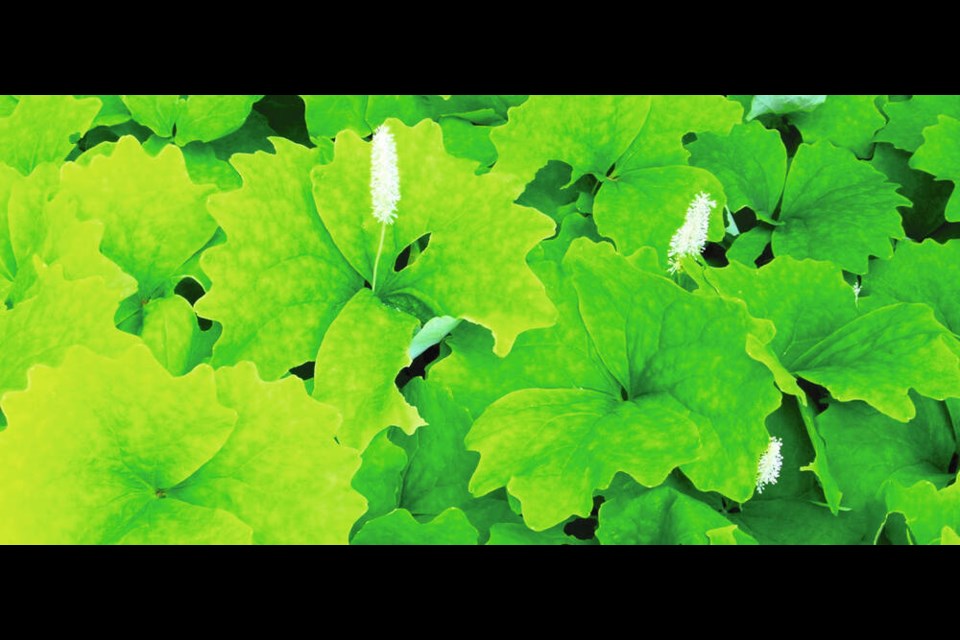Dear Helen: I’ve noticed, in your columns and from other sources, an interest in using more native plants in home garden landscapes. Can you tell me where I can purchase them?
D.A.
Most local garden centres carry some native plants. A check with your nearby favourites should unearth some sources.
I’d also speak with neighbours and other gardeners about what native plants they have in their gardens. My own garden, carved out of forested land, retains many woodland plants in profusion — sword ferns, salal, Oregon grape, vanilla leaf. You might find people willing to pass along a few plants.
The Native Plant Study Group website is one of the best aids to gardeners wanting to add more of these plants to their landscapes. If enough of us do this, “conservation corridors” will be created to nurture the insects and birds that are crucial elements in a healthy ecosystem.
Under Native Plant Information, you’ll find a list of places to observe native plants. These places include Victoria’s Compost Education Centre, Government House, the Horticulture Centre of the Pacific and Swan Lake Christmas Hill Nature Sanctuary.
You will also find a list of Where to Buy Native Plants. The list includes sources in the Victoria area and elsewhere on the Island and the Gulf Islands.
Dear Helen: In a recent column you mentioned the red berries on wintergreen plants. It is my understanding that only female flowers produce berries. Does this not mean that both male and female plants are needed for berry production?
E.Y.
Only a very small percentage of plant species have fully separate sexes — that is, separate male and female plants. Some plants, like squash, bear both male and female flowers on each plant, but many plants are self-fertile (self-pollinating).
Self-fertile plants, including G. procumbens, tomatoes and strawberries, are self-fertile. Each flower has both male and female organs so that, within each flower, the male pollen transfers to the female pistil through insect activity or breezes to start the fertilization process that results in fruits and berries.
Strains of winterberry have been developed to produce extra showy berries. Examples are Red Baron and Very Berry. Botanus, a mail order nursery in Langley, lists a variety called Redwood.
Dear Helen: I’ve read your column for a long time, and saved many of them. One column had a recipe for a plum tart that was delicious. Unfortunately, after a move I cannot find it anywhere. Would it be possible to send it to me? I have some frozen plum halves from my daughter’s tree.
E.M.
The only plum tart recipe I’ve been able to retrieve from my files calls for plum halves arranged cut side down in a pie shell that has been dusted lightly with flour. Scatter slivered candied ginger and nutmeg over top. Before baking, top the fruit with a standard flour-sugar-butter fruit crisp topping, with added cinnamon and nuts if desired Bake at 375 F for around 30 minutes and another 20 minutes at 350 F until the juices are absorbed and the topping is crisp.
My more recent version of the plum tart is simpler. Over the plums and candied ginger in the shell I pour a blend of four tablespoons sugar, three tablespoons flour, one-half teaspoon salt and one-third cup cream, flavoured with vanilla and almond extract.
If I decide to add an (optional) topping, I scatter sliced almonds and a dusting of cinnamon over top. Cover the tart loosely with foil and bake at 375 F for one hour, uncover, and bake for another 20 minutes until the custard-like filling has set.
HCP community education. The Horticulture Centre of the Pacific, 505 Quayle Rd. in Saanich, is offering the following workshops. For further details and online registration go to hcp.ca/events. Register online or by phone: 250-479-6162.
* Pruning Ornamental Plants, Tuesdays, Feb. 22 and March 1, 6:30 to 9 p.m. with a follow-up, hands-on session on Saturday, March 5, 9 a.m. to 12 p.m. Patty Brown will take participants through the theory and techniques of pruning. Members $120, others $145.



